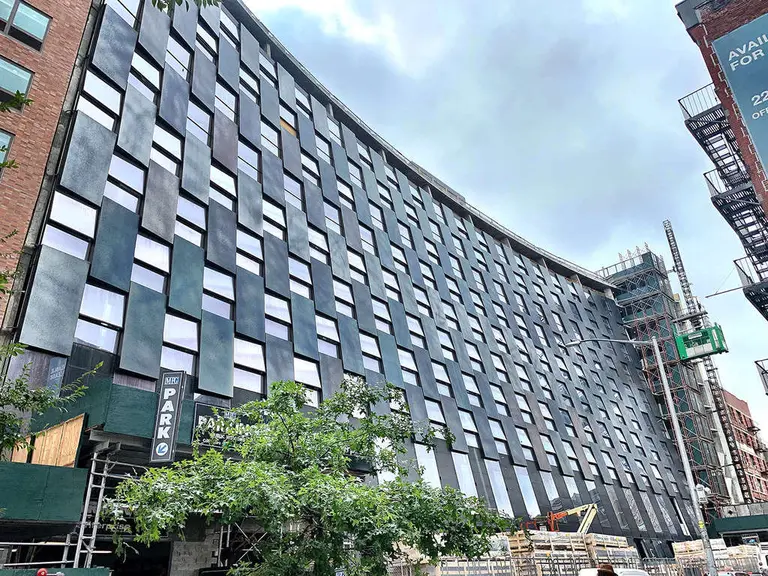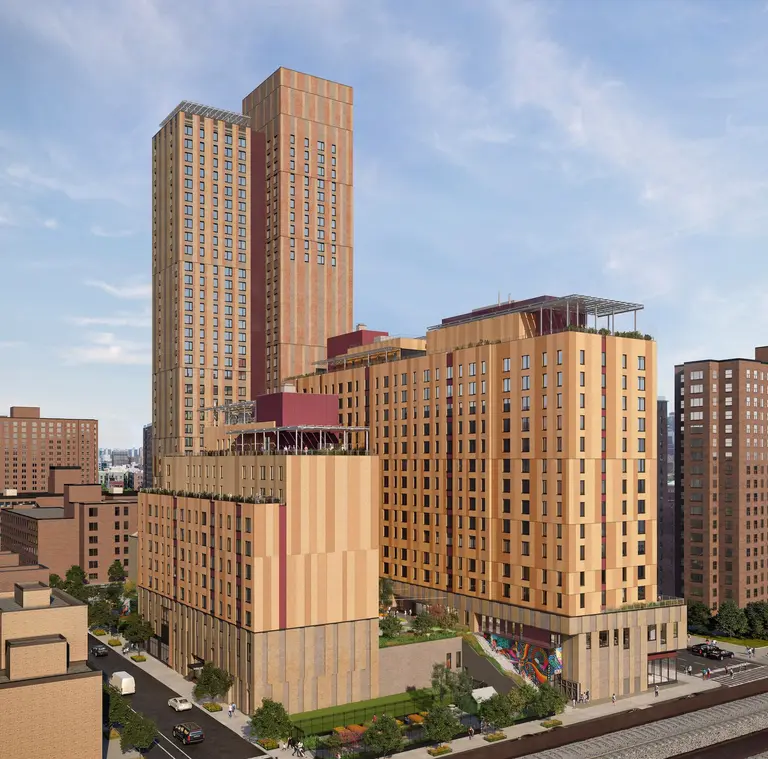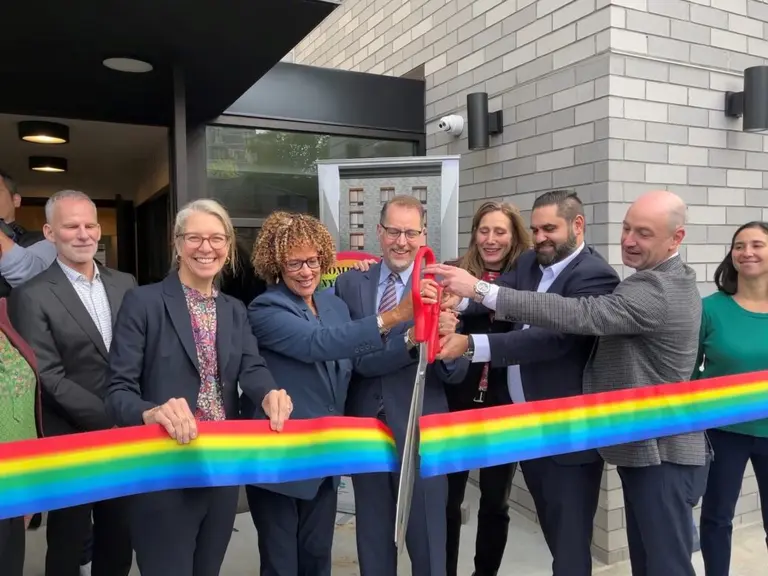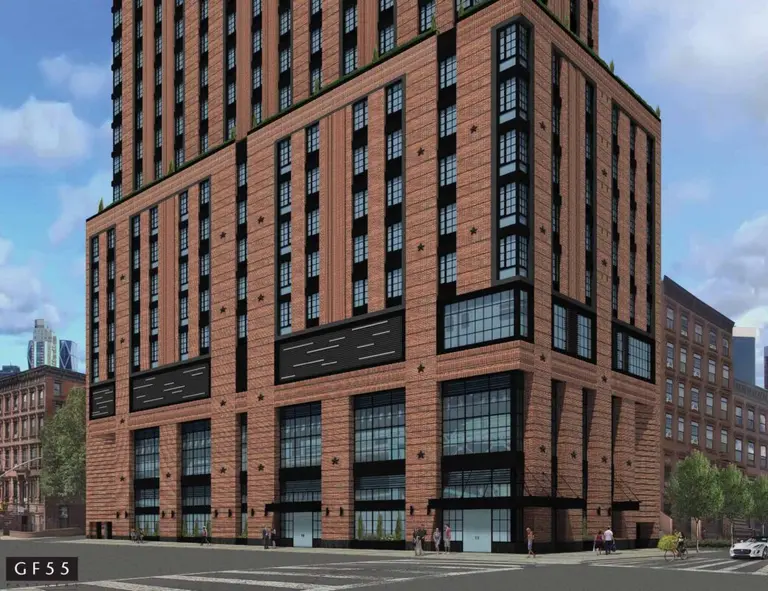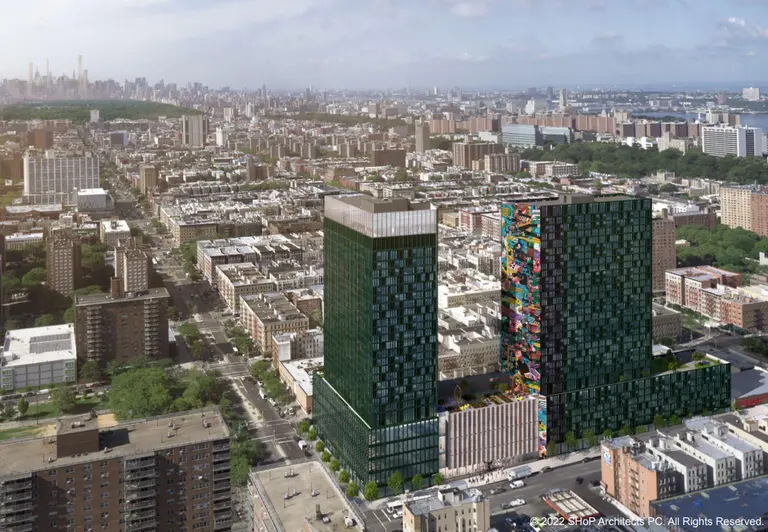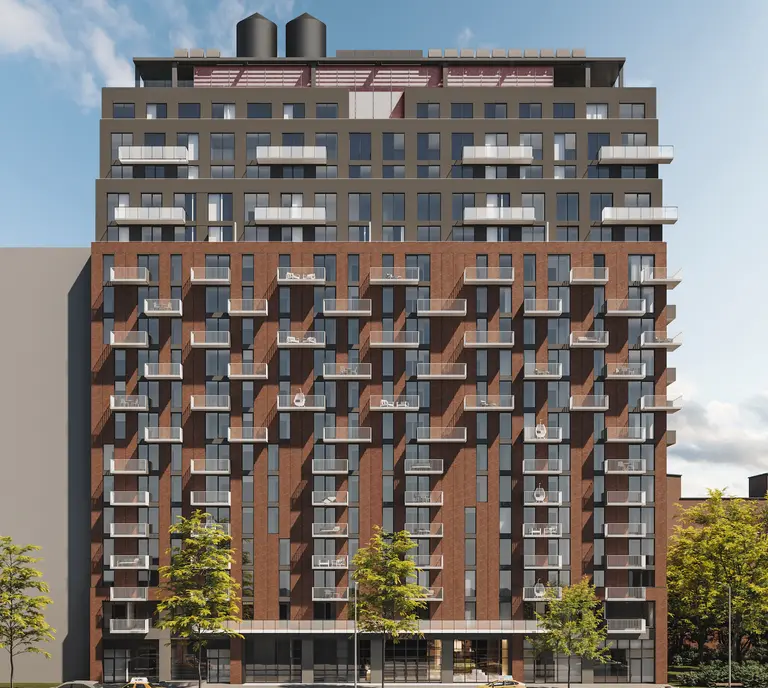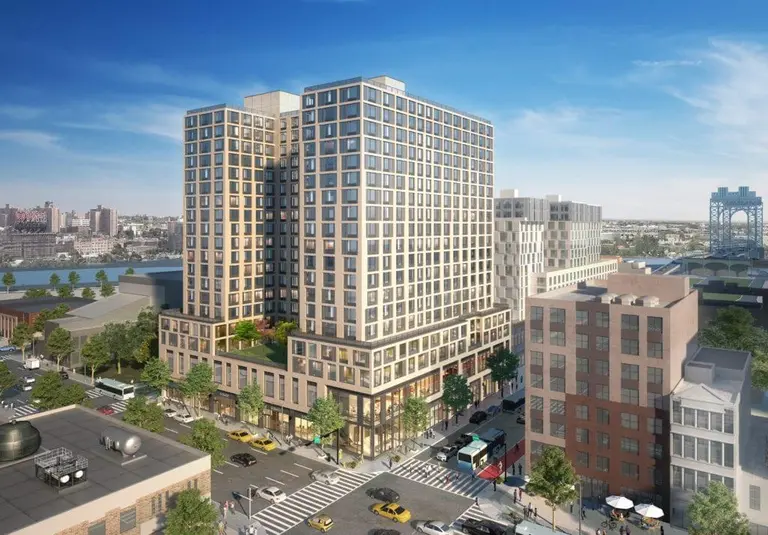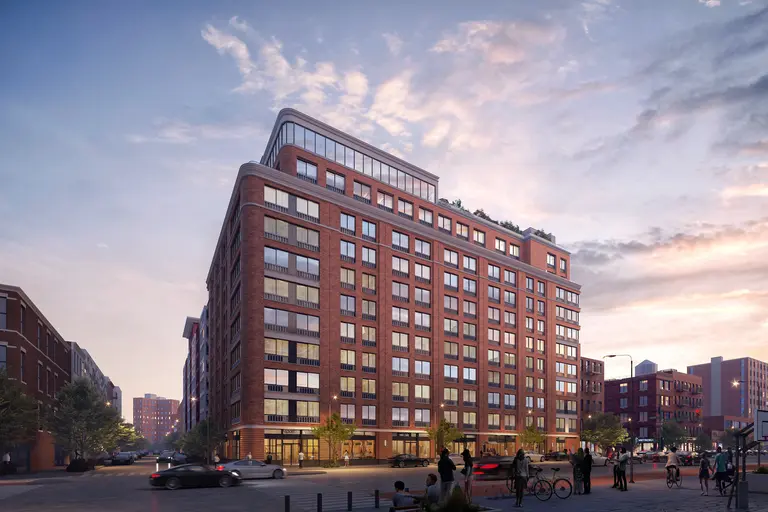East Harlem rezoning would allow for towers of up to 30 stories tall
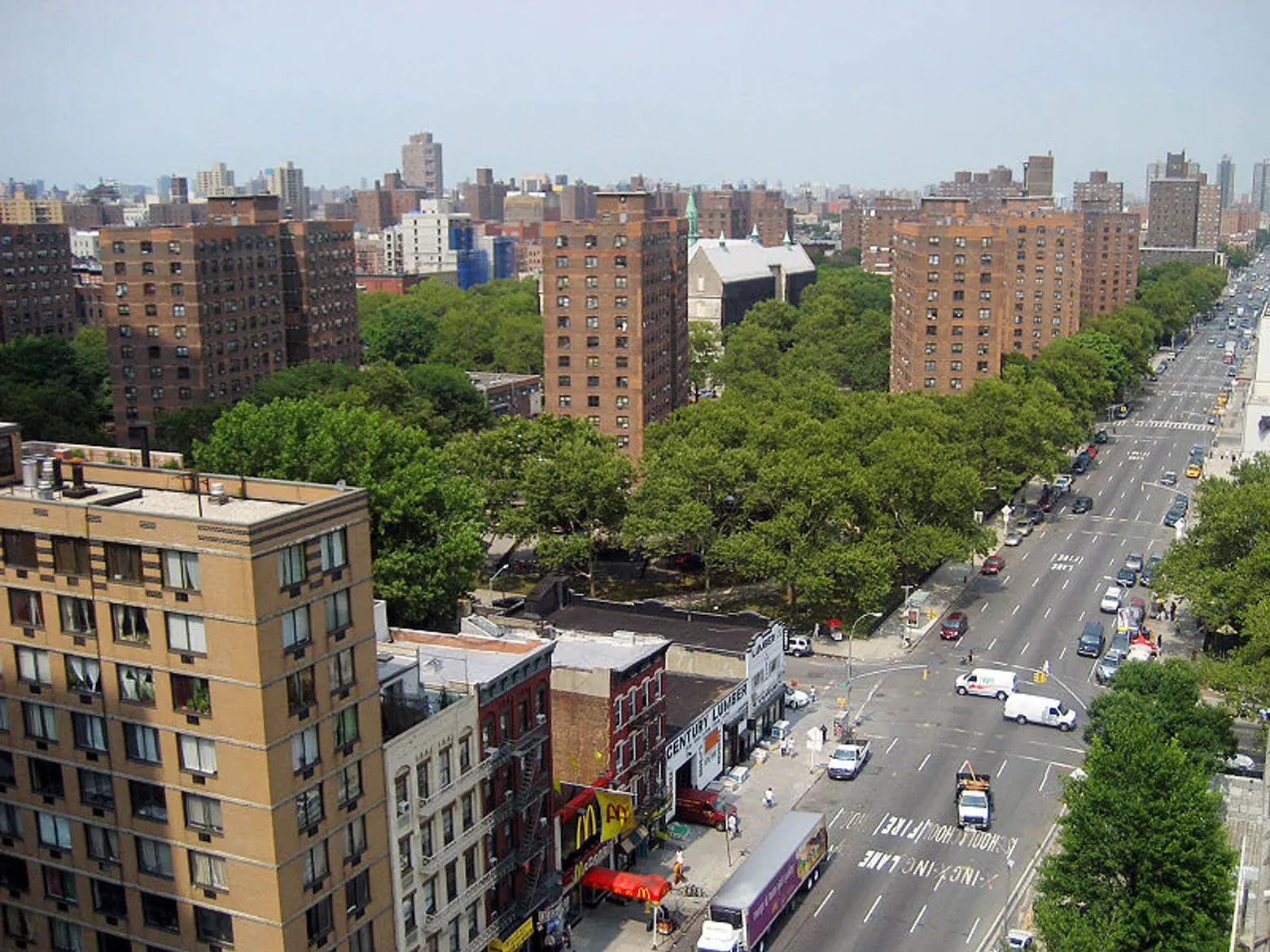
In 2003, East Harlem received a boost when the Bloomberg administration pushed through a plan to rezone a whopping 57 blocks of the neighborhood. The initiative (the first of its kind in 40 years) allowed for increased density along First, Second, and Third avenues, while preserving the lower slung mid-blocks in between. Following the change, the area saw more than a dozen buildings of 8-12 stories sprout up along its busiest stretches. Now, the de Blasio administration is looking to build even bigger, and on Tuesday officials presented their latest upzoning proposal (pdf), a plan that would allow towers up to 30 stories tall to be constructed in the area.
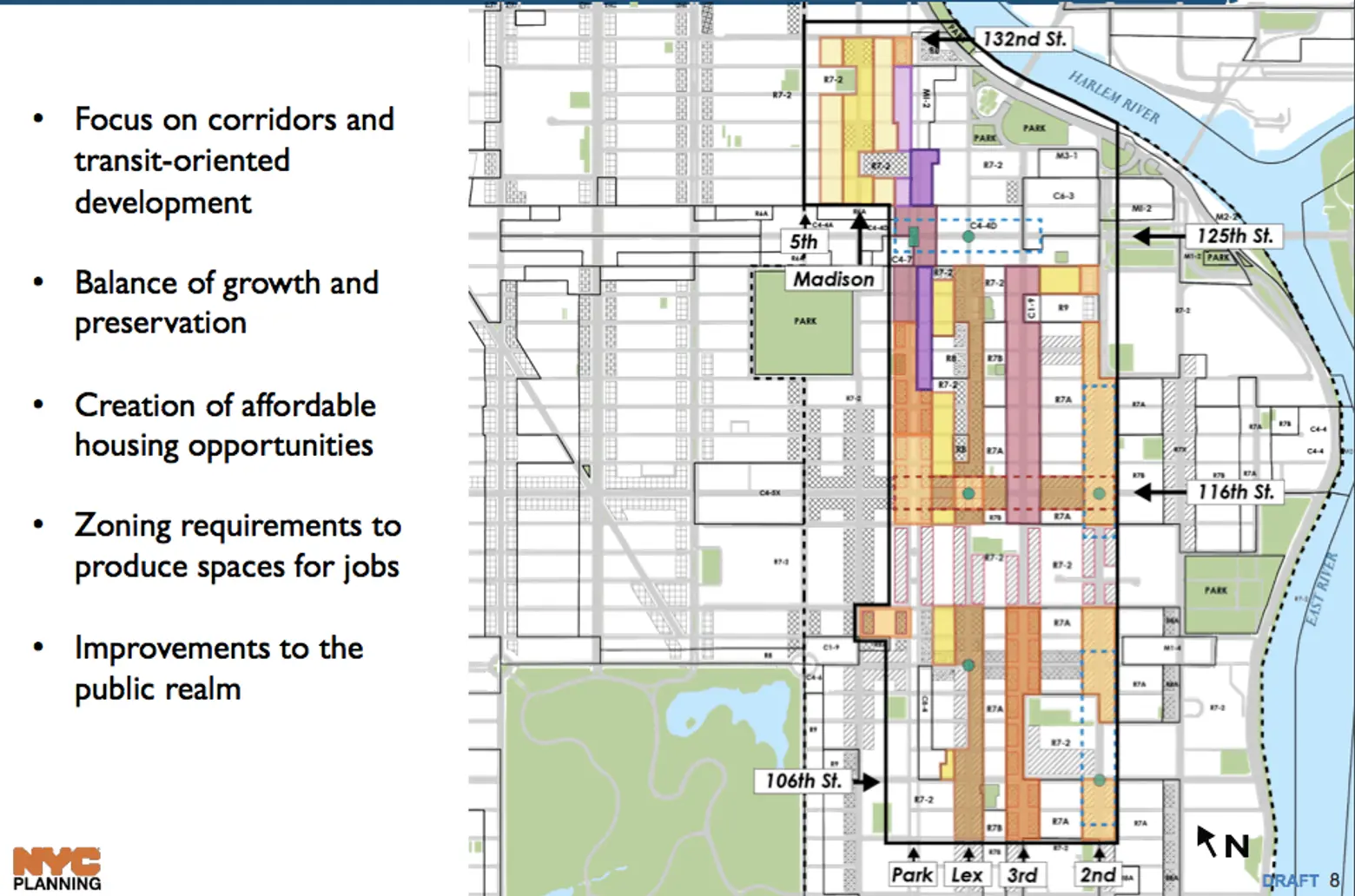
According to Politico, who was at Tuesday’s Community Board meeting when the proposal was unveiled, the rezoning would pave the way for new mixed-use buildings as well as pedestrian and transit improvements in an area bounded by Second and Park avenues and 104th and 125th streets, extending west to Fifth Avenue in the northern portion, from 126th Street to 132nd Street. Notably, in addition to allowing for new constructions of up to 30 stories in some areas, the plan also details the creation of unique districts within the borders that would be subject to their own regulations. For example a “special transit land use district” would require that developments adjacent to the Second Avenue subway platforms reserve space for potential infrastructure and rail additions.
What was not shared, however, is how many affordable housing units would be added under the plan. East Harlem is one of the seven neighborhoods in Mayor Bill de Blasio’s Mandatory Inclusionary Housing program, and as 6sqft previously reported, the area is on the cusp of change. Gentrification is a concern for many existing residents, and the preservation and creation of low-income housing is seen as key to helping neutralize it.
In February, City Council Speaker Melissa Mark-Viverito, who represents East Harlem, released a report outlining what the area’s constituents would like to see happen in exchange for rezoning. Per Politico, highlights included that “half the new housing be rented to low- and middle-income tenants, with at least one-fifth of it being set aside for tenants earning 30 percent of the area median income.”
Surprisingly, despite the proposed scope of change, residents in attendance were largely on board with the plan. Discussions will continue next month.
RELATED:

